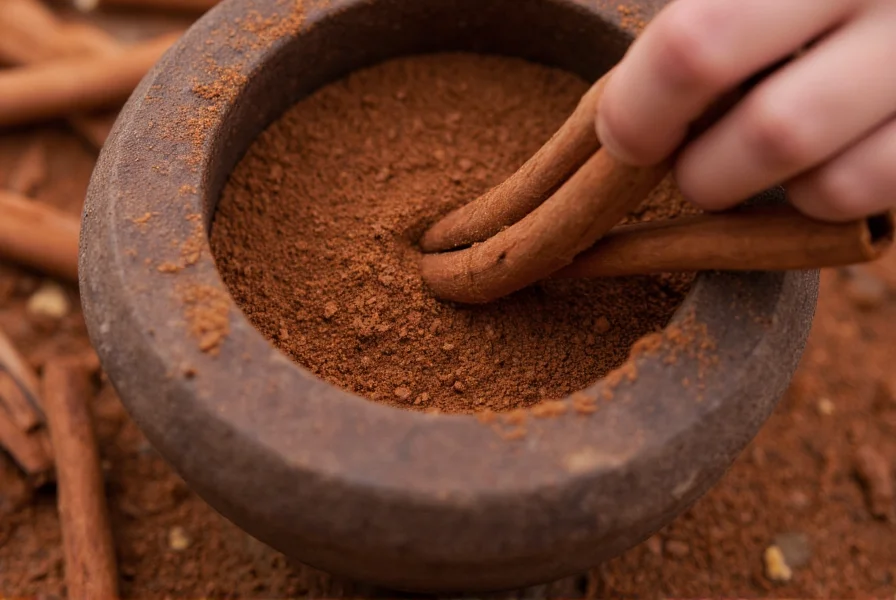When exploring the world of spices, understanding the difference between canela cinnamon and other cinnamon varieties is essential for both culinary excellence and health considerations. Unlike the Cassia cinnamon commonly found in supermarkets, authentic canela (Cinnamomum verum) offers a more nuanced flavor profile and important safety advantages.
Botanical Identity and Geographic Origins
Canela cinnamon, scientifically classified as Cinnamomum verum, originates from Sri Lanka and southern India. The name 'canela' comes from Spanish and Portuguese, where it simply means 'cinnamon,' but in many Latin American markets, it specifically denotes the Ceylon variety rather than the more prevalent Cassia. This distinction matters because what many consumers purchase as 'cinnamon' is actually Cassia (Cinnamomum cassia), which has different chemical properties and potential health implications.
Physical and Chemical Characteristics Comparison
| Characteristic | Canela (Ceylon) Cinnamon | Cassia Cinnamon |
|---|---|---|
| Bark Structure | Multiple thin, delicate layers forming a tight scroll | Single thick, rigid layer |
| Color | Light tan to pale brown | Dark reddish-brown |
| Taste Profile | Subtle, sweet, citrusy notes with mild warmth | Intense, spicy, slightly bitter with stronger heat |
| Coumarin Content | Approximately 0.017g/kg (very low) | Approximately 2.1-4.3g/kg (significantly higher) |
| Price Point | Higher cost due to labor-intensive harvesting | More affordable and widely available |
Culinary Applications of Authentic Canela
Chefs and home cooks seeking authentic Latin American and Caribbean recipes often specify canela because its delicate flavor won't overpower dishes. This premium cinnamon variety excels in:
- Traditional Mexican hot chocolate and churros
- Caribbean rice pudding and other dessert preparations
- Fruit compotes and poaching liquids where subtlety matters
- Spice blends for mole sauces requiring balanced flavor profiles
- Infused syrups for cocktails and specialty beverages
When substituting canela for Cassia in recipes, use approximately 1.5 times the amount of canela to achieve comparable flavor intensity, as its more delicate profile requires slightly greater quantity.
Health Considerations and Scientific Research
The significantly lower coumarin content in canela cinnamon makes it the preferred choice for regular consumption. Coumarin, present in high concentrations in Cassia cinnamon, can cause liver damage when consumed in large quantities over time. While both varieties contain beneficial compounds like cinnamaldehyde and polyphenols, research suggests canela offers similar antioxidant benefits without the same health concerns associated with excessive coumarin intake.
A 2022 review published in the Journal of Functional Foods noted that 'Ceylon cinnamon demonstrates comparable anti-inflammatory and blood sugar regulation properties to Cassia varieties while presenting a significantly improved safety profile for daily consumption.' This makes canela particularly valuable for individuals incorporating cinnamon into their daily wellness routines.

Identifying Authentic Canela in the Marketplace
Purchasing genuine canela requires careful attention, as mislabeling remains common. Look for these identifying characteristics:
- Physical structure: Canela forms a tight, multi-layered 'quill' resembling a cigar, while Cassia typically has a single thick, hard layer
- Texture: Gently break a piece - canela should crumble relatively easily, whereas Cassia remains stubbornly rigid
- Labeling: Seek products specifically labeled 'Cinnamomum verum,' 'Ceylon cinnamon,' or 'true cinnamon'
- Origin information: Authentic canela typically originates from Sri Lanka (formerly Ceylon), India, or Madagascar
Be wary of products simply labeled 'cinnamon' without further specification, as these typically contain Cassia. Specialty spice retailers and Latin American markets often provide better quality control for authentic canela products.
Proper Storage Techniques for Maximum Freshness
To preserve the delicate flavor compounds in canela cinnamon, proper storage is essential. Store whole canela quills in an airtight container away from light and heat sources. Ground cinnamon loses potency more quickly, so purchasing whole quills and grinding them as needed delivers superior flavor. When stored properly, whole canela maintains optimal quality for 2-3 years, compared to 6-12 months for ground product.
Common Misconceptions About Canela Cinnamon
Several myths persist about canela cinnamon that deserve clarification. First, while canela contains less coumarin than Cassia, it's not entirely coumarin-free - moderation remains important. Second, the term 'Mexican cinnamon' often refers to Cassia with added sugar rather than authentic Ceylon cinnamon. Third, despite popular belief, canela doesn't inherently contain more 'cinnamon flavor' - it simply has a different, more complex flavor profile that some prefer in certain applications.

Integrating Canela Into Your Culinary Practice
For home cooks exploring authentic Latin American cuisine, understanding when to use canela versus other cinnamon varieties makes a significant difference. Use canela when:
- Preparing traditional Mexican chocolate caliente for its delicate integration with chocolate
- Creating Caribbean rice dishes where subtle spice is preferred
- Infusing dairy products like custards or ice cream bases
- Developing spice blends for seafood dishes requiring nuanced warmth
Reserve Cassia for applications requiring bold spice presence, such as cinnamon rolls, apple pies, or spice cakes where its stronger flavor can shine through other ingredients.
Conclusion: The Value of Canela Distinction
Understanding the difference between canela cinnamon and other cinnamon varieties empowers both culinary enthusiasts and health-conscious consumers. While Cassia remains widely available and suitable for many applications, authentic canela offers distinct advantages for specific culinary traditions and regular consumption. By recognizing the physical characteristics, flavor profiles, and health considerations of true canela, consumers can make more informed choices that enhance both their cooking and wellness practices.
Is canela cinnamon the same as Ceylon cinnamon?
Yes, canela cinnamon refers specifically to Cinnamomum verum, which is the botanical name for Ceylon cinnamon. In many Spanish-speaking countries, 'canela' denotes this 'true cinnamon' variety rather than the more common Cassia cinnamon found in most supermarkets.
Why is canela cinnamon considered safer for regular consumption?
Canela (Ceylon) cinnamon contains significantly lower levels of coumarin (approximately 0.017g/kg) compared to Cassia cinnamon (2.1-4.3g/kg). Coumarin, when consumed in large quantities over time, can potentially cause liver damage, making canela the preferred choice for daily use in teas, supplements, or regular cooking.
How can I tell if I'm buying authentic canela cinnamon?
Authentic canela forms tight, multi-layered quills that are light tan in color and relatively fragile. When broken, it should crumble easily rather than snapping rigidly like Cassia. Look for specific labeling indicating 'Cinnamomum verum,' 'Ceylon cinnamon,' or 'true cinnamon,' and check for origin information pointing to Sri Lanka, India, or Madagascar.
What are the primary culinary uses for canela cinnamon?
Canela excels in applications where a delicate cinnamon flavor is preferred, such as traditional Mexican hot chocolate, Caribbean rice pudding, fruit compotes, and spice blends for mole sauces. Its subtle citrus notes make it ideal for dairy-based preparations and dishes where cinnamon shouldn't overpower other ingredients.
Does canela cinnamon offer different health benefits than regular cinnamon?
Both canela (Ceylon) and Cassia cinnamon contain beneficial compounds like cinnamaldehyde and polyphenols with antioxidant properties. Research indicates they offer similar anti-inflammatory and blood sugar regulation benefits. The key difference lies in safety: canela's significantly lower coumarin content makes it safer for regular, long-term consumption without the potential liver concerns associated with excessive Cassia intake.











 浙公网安备
33010002000092号
浙公网安备
33010002000092号 浙B2-20120091-4
浙B2-20120091-4